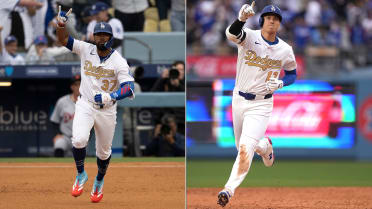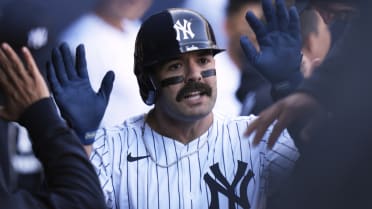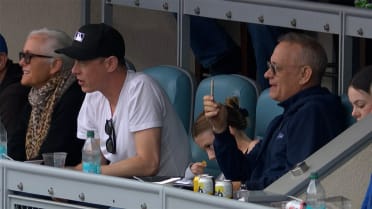NEW YORK -- Back in the mid-1980s, as Dwight Gooden rapidly ascended to the superstardom that would result, eventually, in his becoming the sixth Mets player to have his number retired at Citi Field, Nike erected a billboard in Midtown featuring the young Mets pitcher in the throes of his windup. For years, the mural was a staple of the area, plastered near the Lincoln Tunnel entrance on 42nd Street.
Gooden knew the image well. He would sometimes take people by to see it. But to him, it was an icon -- a symbol of excess.
“You want the truth, or…?” Gooden said Sunday when asked about the mural. He laughed. “The first time I saw that, I was overwhelmed being 20 years old and seeing that. It seemed surreal.”
Back at Citi Field on Sunday, surrounded by former teammates and family members and tens of thousands of fans, Gooden was candid in discussing the challenges of fame at a young age, the off-field problems that diminished his career and the fact that now, at age 59, he is as healthy and happy as he has been in years. With that as Gooden’s backdrop, the Mets could celebrate him freely for what he accomplished on the baseball field, rather than mourn the loss of what he didn’t.
“At his best,” Gooden’s nephew, Gary Sheffield, said, “he was the greatest pitcher that ever lived.”
The evidence has long been part of Major League Baseball’s canon. A Rookie of the Year Award. Three Top 5 Cy Young Award finishes, including one win. Multiple World Series championships. And of course the 1985 season that remains, by some measures, the greatest in modern history.
Some background: Famously, Bob Gibson produced a 1.12 ERA in 1968. So sublime was Gibson, so advanced beyond that era’s hitters, that MLB lowered the mound 10 inches the following year and shrunk the strike zone to its modern size.
The league had, quite literally, leveled the playing field. And it stayed mostly level until Gooden produced a 1.53 ERA in 1985. No one has matched that figure since.
“There have been just a few players in the history of baseball -- or for that matter, in all of sports -- who were a singular gate attraction, turning all of his games into a must-see event,” said Sunday’s emcee, Howie Rose. “That was a Dwight Gooden start at Shea Stadium.”
For about a half-hour on Sunday afternoon, the Mets tried to recreate as much of that magic as they could. Down the right-field line, a makeshift “K Korner” assembled, featuring the same types of signs fans would hang from the stands at Shea in the 1980s. Seven of Gooden’s children were in attendance, plus many more grandchildren and great-grandchildren. Thirteen of his former Mets teammates were also there, including Darryl Strawberry, who has been recovering from a heart attack in St. Louis.
One of them, Mookie Wilson, presented a bronzed pitching rubber with Gooden’s career accomplishments etched into it. There were a lot of them.
“Not to blow smoke,” Gooden said, “but I won just about every award a pitcher can win.”
As a light rain fell at Citi Field and players watched from the dugout, a pair of stadium workers removed the tarp to reveal Gooden’s No. 16 mounted for posterity down the left-field line. He became the sixth Mets player and the ninth individual to have his number retired at Citi Field. Later this year, Strawberry will become the seventh.
Toward the end of his career, Gooden said, such accolades began to mean more to him. He came to appreciate things like the billboard on 42nd Street -- evidence of the pitching greatness that once existed within him. He also began feeling a certain nostalgia toward the Mets. Following the 1997 season, after two years with the Yankees, Gooden called the Mets asking to return. They declined. On two more occasions over the ensuing years, Gooden tried to return to Queens. Each time, Mets officials said no.
“I always wanted to come back here and let the fans know how much I appreciated them and what they meant to my career,” Gooden said.
Sunday finally offered him that chance. Following the pregame ceremony in his honor and a brief rain delay, Gooden reemerged from the dugout to deliver a ceremonial first pitch to one of his grandsons, Kayden. As he walked off the field in a dark blue suit, a slight limp to his step, Gooden again acknowledged the crowd -- decades later, a mural repainted in as vibrant hues as ever.
Senior Reporter Anthony DiComo has covered the Mets for MLB.com since 2007.




